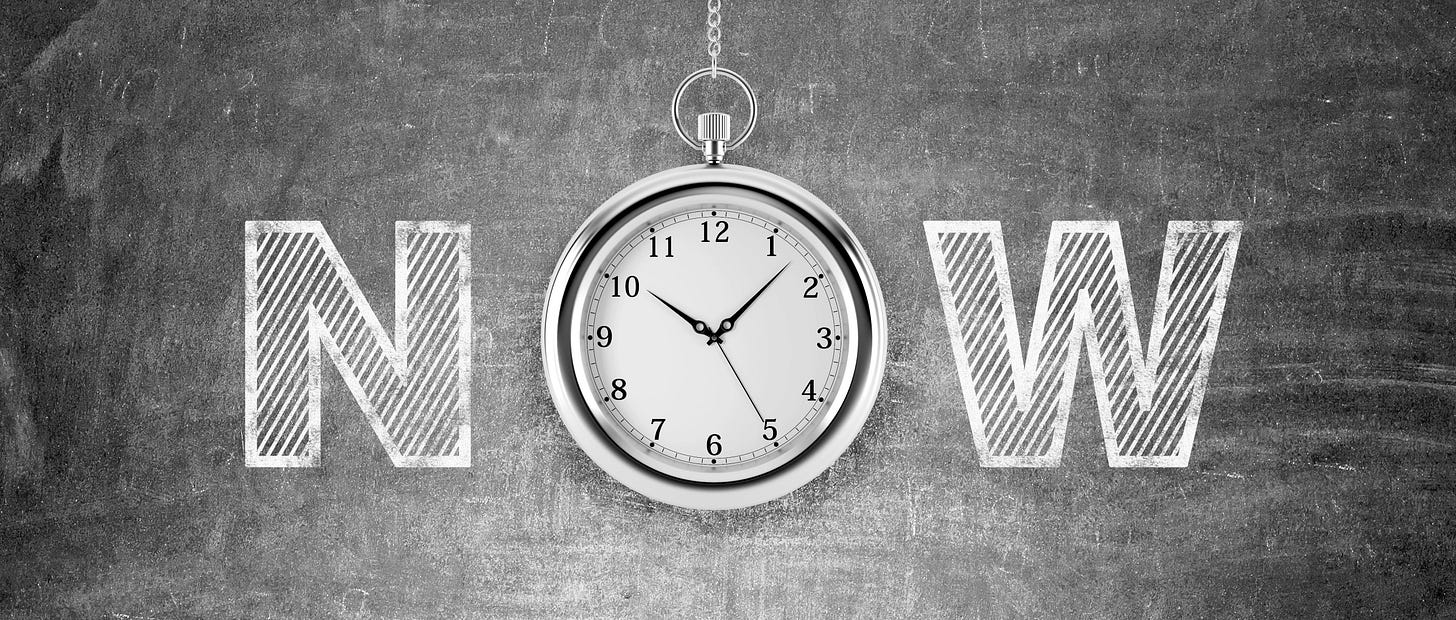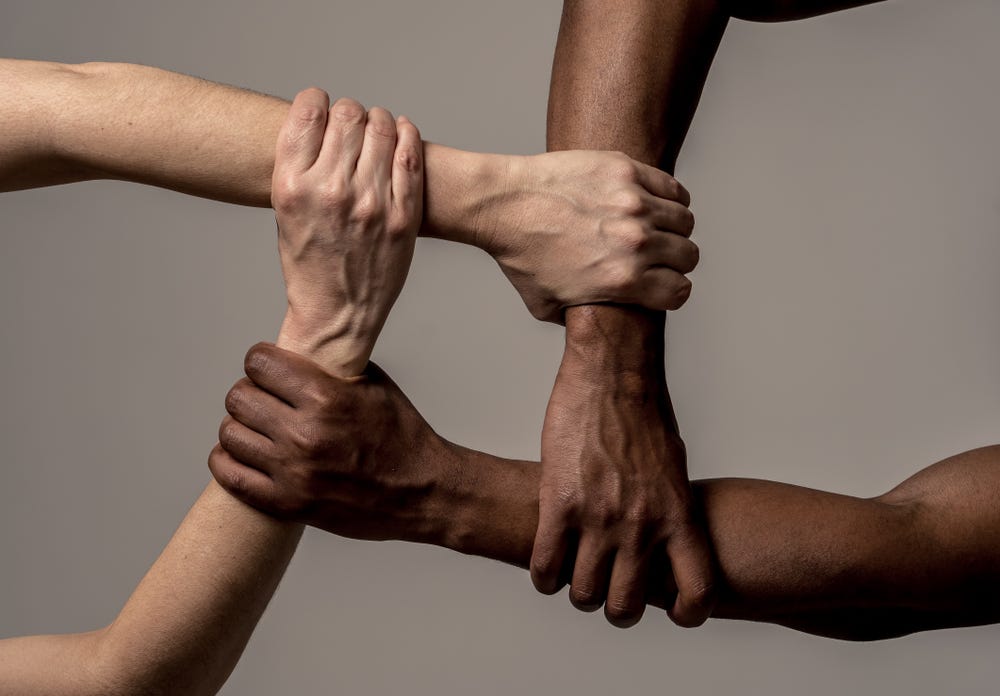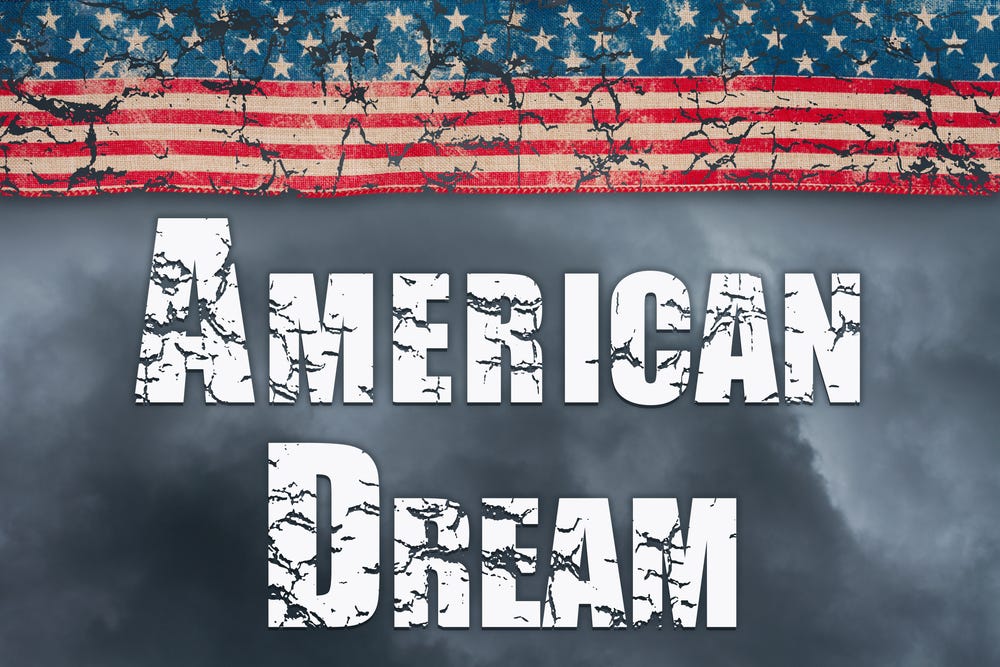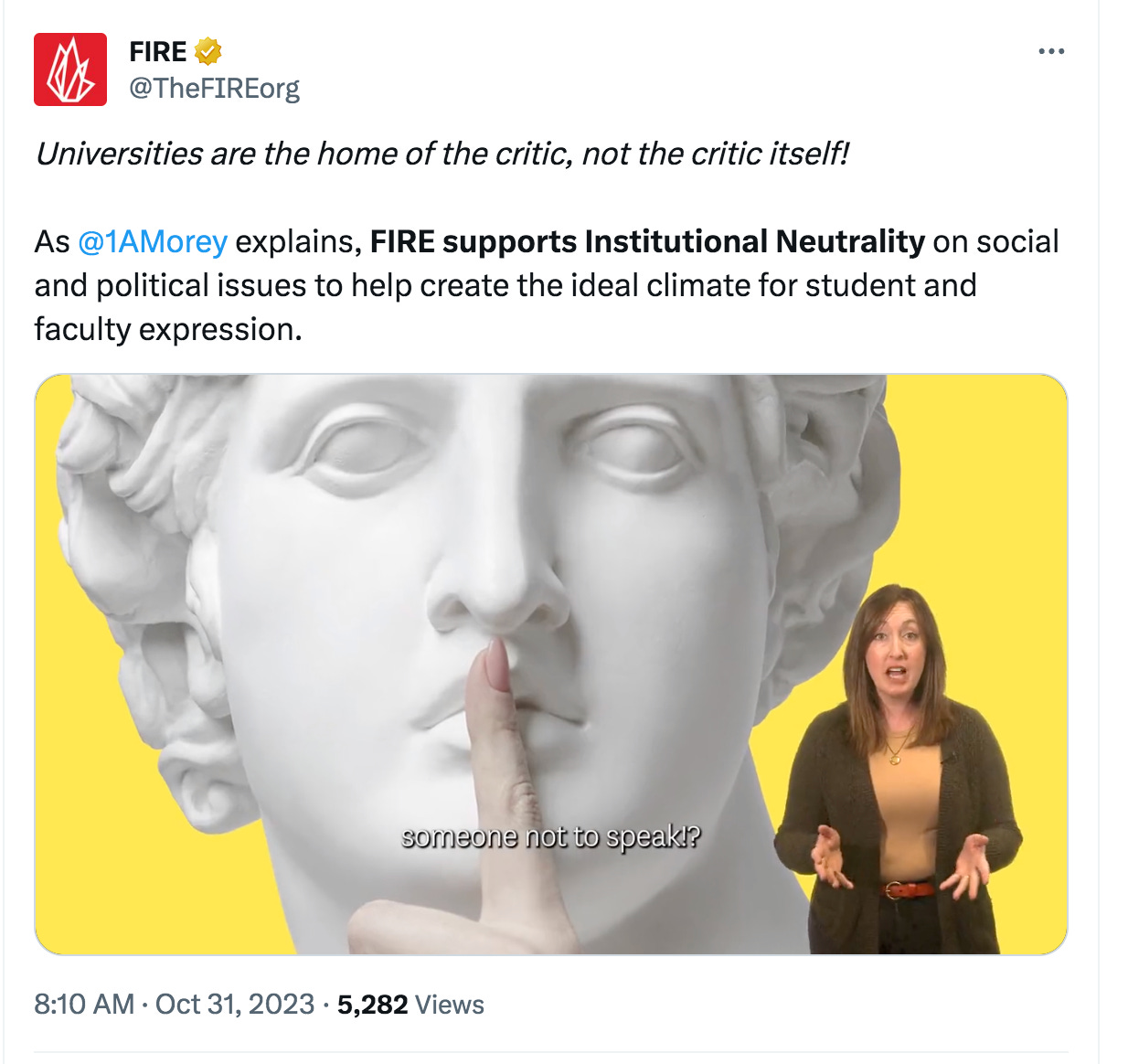E-Pluribus | October 31, 2023
A call to exploit woke's time of weakness; racial strife isn't a given; and debunking American Dream myths.
A roundup of the latest and best musings on the rise of illiberalism in the public discourse:
Mike Gonzalez: Seizing the Moment
The “woke” mentality may still dominate education, politics and mainstream media, but Mike Gonzalez at City Journal sees an opening for conservatives to push back. Gonzalez writes that conservative principles can help America recover “from its collective bout of racial and sexual hysteria.”
Two recent events suggest that the United States might be at a turning point. First is the public’s rejection of university students and their professors’ justifying, or even celebrating, the recent massacre in Israel. Parents have been outraged by the reactions of their children’s schools and used Facebook groups to organize in response, demanding, for example, that university presidents discipline or fire offending professors or administrators. Indeed, many parents now wonder whether those colleges’ professors can be trusted to teach their kids. Donors are pulling their money from colleges that refused to condemn Hamas unequivocally.
Old-fashioned liberals drew the line when UC Davis professor Jemma Decristo publicly threatened violence against “[Z]ionist” journalists. More said “enough” after Cornell University history professor Russel Rickford called Hamas’s carnage “exhilarating” and “energizing.”
Humorist Bill Maher had a rational response that more accurately reflected the national sentiment. “There are few if any positives to come out of what happened in Israel,” Maher said on his television show on October 20, “but one of them is opening America’s eyes to how higher education has become indoctrination into a stew of bad ideas, among them the simplistic notion that the world is a binary place where everyone is either an oppressor or oppressed.” Tragically, for some, it took a massacre of Jews in the Holy Land to spark such clarity.
A second event suggesting that America may be waking up to the excesses of wokeness was Ibram X. Kendi’s recent fall from grace. Kendi’s racialist worldview was inspired by a broader menu of Marxist concepts that have influenced American culture over the last 30 years. Less than four years ago, the Washington Post wrote that Kendi was “a leading voice among a new generation of American scholars who are reinvestigating—and redefining—racism.” His ideas, another celebratory profile said, were “bracing and challenging.” The New York Times, the New Yorker, and The Atlantic agreed. Former Twitter CEO Jack Dorsey gave Kendi a $10 million grant with “no strings attached.”
After Kendi laid off 19 staff members at his Boston University center, leaving a much-smaller staff of 15, however, critics accused him of not producing any real scholarship, of having blown through at least $43 million, and of presiding over a toxic work environment.
[. . .]
It’s a propitious time, then, to take steps to rid our institutions of the DEI ideology. The White House and the Senate are in Democratic hands, making it unlikely that an anti-DEI agenda will get federal traction. Courts, though, can halt the institutionalization of DEI, such as forbidding federally funded institutions from compelling students to affirm ideological claims. Such indoctrination runs afoul of the Constitution’s First Amendment protections against compelled speech.
Read it all here.
Michael Strambler: Are Different Races Incompatible? Far From It.
Writing at Discourse Magazine, Michael Strambler acknowledges that “there are good reasons for us to be pessimistic about relationships between races.” But after debunking the supposed intrinsic incompatibility between racial groups, Strambler presents solutions that can mitigate the difficulties that really do exist.
Although there are good reasons for us to be pessimistic about relationships between races, it’s not the end of the road yet. There are some things we can all do to improve the situation, and schools and parents play crucial roles.
Teach dialogue and debate. It certainly seems that our ability to engage people with different viewpoints has atrophied over the past decade or so. Anecdotal evidence is everywhere, from polarized politics to increased racial and gender tensions to social media mobbing, doxxing and other forms of cyberbullying. If the adults are too far gone, the least we can do is endow our youth with the necessary skills to engage others with different views and to learn something in the process. This can happen through actively incorporating skill development in dialogue and debate in schools. Organizations like The Mill Institute and Braver Angels are doing fantastic work in this area, and aspects of social and emotional learning programs are also relevant for developing these abilities.
Improve civics and history education. With interpersonal alienation and political polarization increasing at such a fast clip, I’ve often wondered about the possibility of another U.S. civil war. But a recent conversation with Paul Carrese, director of the School of Civic and Economic Thought and Leadership at Arizona State University, convinced me that a much more likely scenario is societal disintegration. That is, we become so cynical, disillusioned and, yes, pessimistic about the American project and our fellow citizens that we just give up trying to forge a society together and it collapses as a result.
This may not sound as tragic as a civil war. But in such a state, who is going to care enough to help the vulnerable, to improve and sustain our many institutions, and to protect us from foreign and domestic enemies? Why give so much of yourself to these projects when you feel that the out-groups are alien to you or unworthy of your effort?
Strengthening our civics and history education would not only help create a more civics- and history-literate citizenry, but it would help diminish relational pessimism by emphasizing our shared responsibilities to each other. It also reminds us of the many times we and other societies have successfully bridged bigger divides than the ones we’re experiencing now. And of course, it’s essential that the teaching of civics and history be honest and reflective of all the diverse people and perspectives of our country. “Educating for American Democracy,” a report developed by politically diverse scholars, educators and practitioners, including Harvard’s Danielle Allen, has done a great job of this and provides a solid roadmap for what our schools can do to get us there.
Read it all.
Gonzalo Schwarz: The Four Myths of the American Dream
At The Dispatch, Gonzalo Schwarz reviews Ours Was the Shining Future: The Rise and Fall of the American Dream, a new book by New York Times columnist David Leonhardt. The myths Schwarz takes on are not myths of the Dream itself, but rather what he sees as Leonhardt’s undue pessimism about the status of the Dream and its availability to future generations.
[David] Leonhardt cares deeply about the American dream and understands how crucial it is for the future of the country. He recognizes how it has invigorated the country’s historic pursuit of happiness, while also acknowledging many of the issues that are plaguing it (ex: complacency, cronyism, and a lack of competition). Ours Was the Shining Future aspires to rekindle what the writer James Truslow Adams defined eloquently in his 1931 book, The Epic of America: “The dream of a land in which life should be better and richer and fuller for every man, with opportunity for each according to his ability or achievement.”
But Leonhardt largely misses where the American dream stands today. In particular, I worry that Ours Was the Shining Future relies on four myths of the American dream which together downplay its promises and possibilities today.
The first myth is that the American dream is, quite bluntly, dead. That’s the premise of the book’s title—ours was the dream, in the past tense. But Leonhardt ignores present attitudes about the American dream. That’s something my organization has tried to do, resulting in a much more optimistic picture.
Our 2023 survey on the American dream found that three in four Americans think they have either achieved or are on their way to achieving it. That’s not an outlier. In 2022, 82 percent of respondents said they thought the American dream was alive and well. Our surveys go back to 2020 with similar results across age, race, income, and educational levels. Organizations like Pew and Gallup have had similar findings. And when respondents are asked about opportunities for their kids, results are similarly encouraging.
The second myth is that the American dream is only about material wealth. Ours Was the Shining Future goes to great lengths to focus on how that and income mobility are the American dream’s most important requirements. Leonhardt cites the important work of Harvard’s Raj Chetty, which shows a bleak picture of upward economic mobility: According to Chetty, there’s been a steep decline since the 1940s of people ages 32-40 who out-earn their parents when they were that age.
[. . .]
The third myth is that the American dream is in decline because there are fewer unions and fewer government interventions in the economy. Leonhardt provides the history of American unions, and concludes that the Progressive and New Deal eras shaped our economy and institutions for the better. But he’s far too sanguine about unions at the time.
Read the whole review.
Around Twitter (X)
Did the modern cancel-culture movement begin with the Yale Halloween controversy in 2015? Here’s Greg Lukianoff, via Reason, reminding us of the details. (click for video)
The Ethnic Studies Department at the University of Colorado, Boulder, has weighed in on the Middle East crisis. Brooklyn College’s KC Johnson says that was a bad idea:
And finally, along the same lines, the Foundation for Individual Rights and Expression (FIRE) makes its case for institutional neutrality—all the time, not just during this current time of conflict. (click for video)










